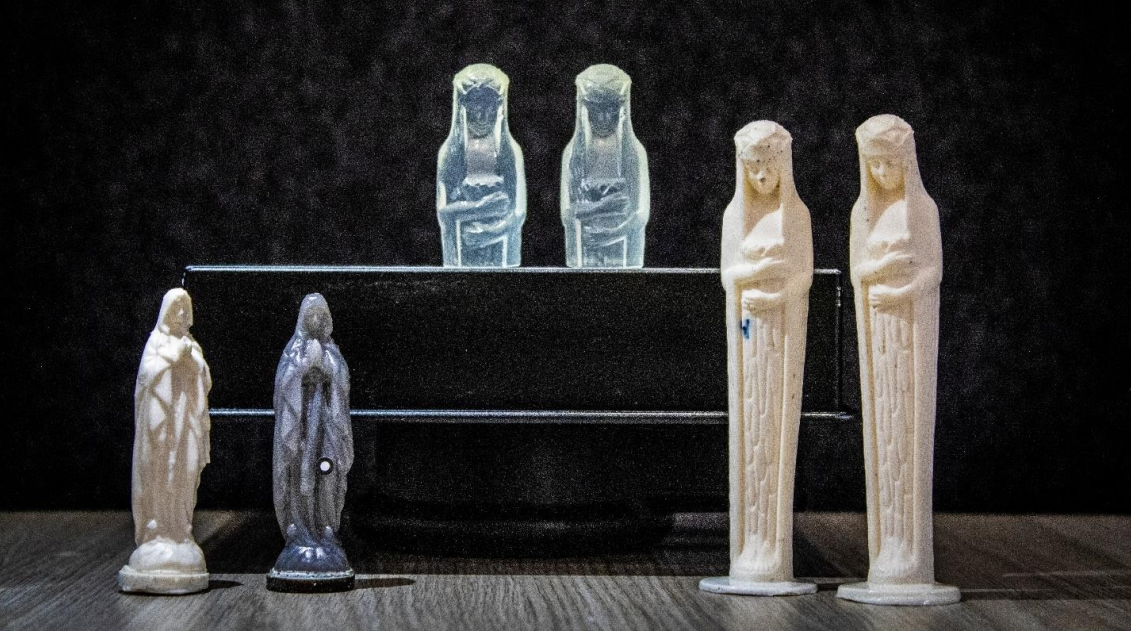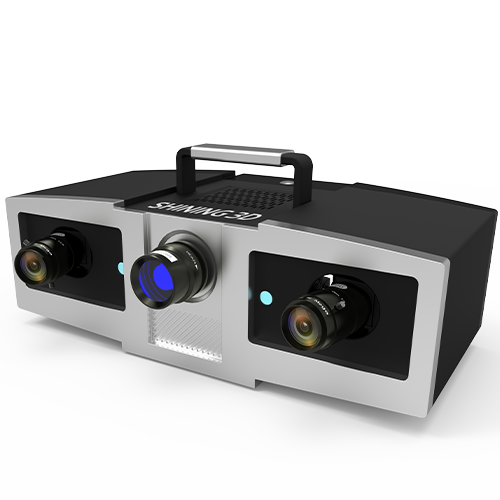
CASE STUDIES
Published on Mar. 20th 2024
3D Scanning & 3D Printing Glass Statues: Fablab Arnhem x Museum Lalique
This article focuses on 3D scanning and 3D printing glass statues, in order to reproduce an iconic fountain.
About the Client
- Company Name Fablab Arnhem for Museum Lalique
- Location Arnhem, Netherlands
- Subject 3D scanning and 3D printing glass statues
- Solution OptimScan 5M Plus
Recreating the Charm of Les Sources de France Fountain
The Paris International Exhibition of Modern Decorative and Industrial Arts in 1925 featured the Les Sources de France fountain. It consisted of 128 female glass statues that depict Greek mythological figures. They symbolize the origin of all life. The fountain was 14 meters in height and contained 140 water-spouting objects. The fountain would light up from the inside, which led to a spectacle at night. But after the world expo, authorities demolished the fountain and sold the statues.
 The Les Sources de France fountain
The Les Sources de France fountain
After almost 100 years, Museum Lalique wanted to bring back the iconic fountain and planned to show it in a new exhibition. However, the original statues have been hard to find. The Museum Lalique has kept a tiny statue of the muse Calliope from the same era. Thus, they asked Fablab Arnhem to help them reproduce several miniatures and create a scale model of the fountain.

The tiny statue of the muse Calliope
Fablab Arnhem is located at the HAN University of Applied Sciences in the Netherlands. As an innovative workspace for digital technologies, Fablab Arnhem provides workshops and equipment for people from various industries to learn about technologies such as 3D scanning and modeling.
 Fablab Arnhem
Fablab Arnhem

Discover the product you're looking for
- Full specifications
- Using scenarios
- Key features
- Even comes with a bundle!
3D Scanning and 3D Printing Glass Statues
Making a Mould and Pouring
In view of the high value of the statue and the difficulty of scanning the reflective surface of the glass, Fablab Arnhem decided to create a replica for scanning first. They created a silicone mold of the statue and then cast it using polyurethane. The polyurethane has a frosted white finish which worked perfectly for 3d scanning. Now, Fablab Arnhem got a highly accurate replica.
 Making a mould and pouring
Making a mould and pouring
3D Scanning Glass Statue’s Replica
Fablab Arnhem decided to apply the OptimScan 5M Plus metrology 3D scanner.
 OptimScan 5M Plus
OptimScan 5M Plus
The height of the Muse Calliope statue was only 11cm, and Fablab Arnhem needed to enlarge its replica to 38cm. When enlarged, even small imperfections would be easily seen. Thus, they had to make sure that all the details of the scan were correct. For this reason, the advantages of the OptimScan 5M Plus are clear:
●Using the OptimScan 5M Plus – 100mm lens, achieve highest resolution with point distance of 0.04mm and reach accuracy up to 0.005mm.
●Desktop based 3D scanner, more capable for capturing fine details.
●Only two scans (front and back) needed for the complete data.
●The latest software is easier to use.
 3D scanning the replica of the muse Calliope
3D scanning the replica of the muse Calliope
 Scanning data of the muse Calliope
Scanning data of the muse Calliope
Digital Post-processing
After taking the scan, Fablab Arnhem used Blender to refine the model. The high-fidelity scan with high resolution (small point distance) allows them to clearly see all fine-detailed features. So, they can make the model stay as close to the original as possible. Like with physical sculpting, they filled the holes and smoothed it out. Finally, they smoothed out the noise that would be visible after scaling up the original scan to 38cm.
 Data processing in Blender
Data processing in Blender
3D Printing Glass Statues
Through the use of SLA 3D printing techniques, Fablab Arnhem was able to print the Muse Calliope in three new sizes. The SLA printing technique is known for its detailed prints and the smoothness between the printing layers that almost makes the printing layers invisible to human eyes. They used a crystal-like resin to simulate a glass look and polished them to increase the transparency.
 3D printed statue
3D printed statue
Final Steps
In like manner, Fablab Arnhem will use these three new prints to make new large silicone moulds. They will use these moulds to cast 12 statues of various sizes in transparent, UV-resistant polyurethane. These cast polyurethane pieces are the final statues that will be used for the fountain.
 Right: cast polyurethane pieces
Right: cast polyurethane pieces
Conclusion
In conclusion, the article highlights how 3D scanning and printing can prove to be a useful tool for the re-creation of art, as demonstrated by the successful reproduction of glass statues. By 3D scanning, modeling, and 3D printing glass statues using OptimScan 5M Plus, Blender, and SLA technology, Fablab Arnhem will allow visitors to feel the fountain again. Also, the museum will display three printed and polished statues to demonstrate the process of utilizing new technologies to restore art history in an accessible way.
If you want to explore 3D scanning, 3D printing and digital modeling to revive lost historic treasures, contact us without doubts!

OptimScan 5M Plus
OptimScan 5M Plus is a High-precision 3D inspection scanner with narrow-band blue light source and upgraded high-resolution industrial lens, it provides better detail performance in scanning and smoother data quality.
- High Accuracy up to 0.005mm
- High Resolution Cameras
- Multiple Scan Ranges
